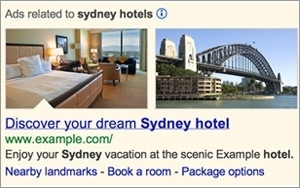PLA Cost Per Click Rises; ROI Remains Stable
- by Laurie Sullivan @lauriesullivan, January 29, 2014
 The cost
per click (CPC) rose for text and product listing ads, but the return on investment for PLAs remained stable for the past six quarters. Research from Adobe released Wednesday shows PLAs saw eight
times more growth than Google text ads, and four times more growth than Facebook ads. Google PLA CPCs rose 80%, while the engine's text ad CPCs rose 11%; and CPCs for text ads on Bing rose 23%,
compared with the year-ago quarter.
The cost
per click (CPC) rose for text and product listing ads, but the return on investment for PLAs remained stable for the past six quarters. Research from Adobe released Wednesday shows PLAs saw eight
times more growth than Google text ads, and four times more growth than Facebook ads. Google PLA CPCs rose 80%, while the engine's text ad CPCs rose 11%; and CPCs for text ads on Bing rose 23%,
compared with the year-ago quarter.
PLAs mostly support retailers, but Google's tests with various ad formats clearly outline a shift from text ads to text and images. Paid search continues to evolve from single-format text ads to more diverse marketplace with multiple ad formats. Ads running in search engine queries to support the insurance industry allow users to input their ZIP code to get a quote for their area.
Demand for keywords might increase the price of clicks, but that didn't stop retailers from running PLA campaigns during the 2013 holidays. In fact, Google's share of clicks from PLAs outpaced retail ads running on the Yahoo Bing network. Advertisers using both Google PLAs and text ads saw 22% of search clicks from PLAs, while the Yahoo Bing network captured 20$ of search clicks for retail. Total search clicks rose 16% year on year.
"The return on investments remains constant since the ads were introduced," said Sid Shah, Adobe Director of Business Analytics. "Conversion rates continue to climb higher on PLAs compared with text ads. Text ads persuade, but text ads with an image and price are more compelling."
Typically, when CPCs rise, the ROI drops, but for the past six quarters the returns on investments have remained flat, Shah said. When the service was free, marketers paid less attention to the product description feeds and matching consumer intent with a specific product or service. Turning PLAs into a fee-based service helped brands to connect more closely with consumers because marketers must optimize the feeds to make the ads work correctly. So the ROI remains steady among Adobe clients, despite higher CPCs.
Shah said to expect PLA CPCs to fall in Q1 as retailers evaluate budgets after the holiday push. Marketers should also expect more vertical specific ad formats as the success from PLAs continues to signals a shift from a text only to image based. The challenge comes from the search industry becoming fragmented from Google and Bing rolling out different types of ad formats that include an image, a video or an extension allowing the consumer to download a white paper or get more information from the search query.
For retailers, success with PLAs will become dependent on deeper cross-functional collaboration; product inventory will become streamlined with marketing. Fragmentation will continue from channel to device to ad type, and marketers will find more ways to scale digital marketing across multiple ad formats and platforms.


